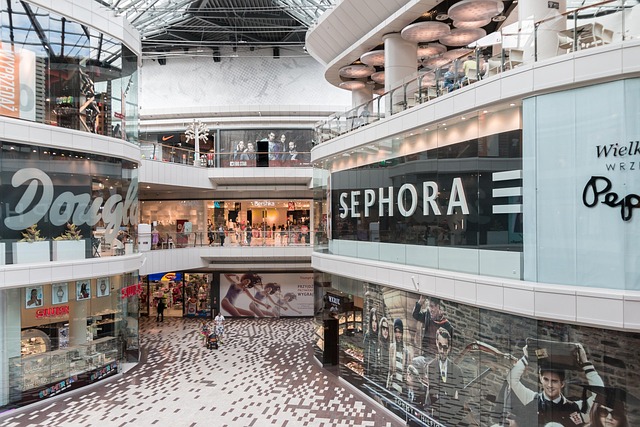By Amber Hovious, VP of Marketing and Partnerships at Teamwork Commerce
Retail isn’t just changing, it’s accelerating. With every season, consumer expectations evolve, driven by a mix of lifestyle shifts, economic pressures, and rapid technological advancements. As we approach Summer 2025, this transformation becomes even more pronounced. The challenge for today’s retail executives isn’t merely keeping up, it’s staying ahead.
This summer, consumers will demand seamless, hyper-personalized experiences—whether they’re jetting off for holidays, shopping poolside from their smartphones, or updating wardrobes for staycations. To stay competitive, retailers must anticipate, not react. Success depends on technology-enabled agility, operational precision, and customer-centric innovation.
From Seasonality to Strategy: The Executive Imperative
Seasonal change is often viewed tactically: rotate stock, launch promotions, adapt displays. But leaders know the real opportunity lies in turning seasonal fluctuations into strategic growth levers.
Summer 2025 presents both a test and a catalyst. Increased footfall and online traffic offer upside; but only for those with the infrastructure to deliver frictionless, personalized engagement at scale. Those who fail to meet expectations risk eroding loyalty, frustrating consumers, and losing share to more agile competitors.
According to Deloitte, 62% of consumers say a seamless experience increases their likelihood to return to a brand. This makes customer experience not just a marketing concern, but a boardroom priority.
Inventory Intelligence: A Strategic Balancing Act
Inventory remains one of the most complex and risk-prone areas of retail operations during seasonal transitions. Retailers must delicately balance legacy stock with fresh assortments, while navigating unpredictable demand across markets with vastly different summer patterns.
Retailers must champion real-time, data-driven inventory strategies. This involves leveraging predictive analytics to optimize replenishment cycles, utilizing unified commerce platforms to improve inventory visibility across all channels, and enabling dynamic pricing mechanisms to efficiently move slow-moving stock without compromising margins.
Global retailers operating in diverse climates: urban centers, coastal regions, or tourist hotspots, must localize inventory strategies while maintaining centralized control. This balance is only possible with integrated retail ecosystems that allow for granular, real-time decision-making.
Elevating Omnichannel Beyond Buzzword
Today’s consumer no longer distinguishes between physical and digital channels—they expect a single, seamless brand experience. To meet these expectations, executives must ensure their organizations are equipped for mobile-first engagement, real-time inventory synchronization, and flexible fulfillment options such as click-and-collect and ship-from-store.
Tech-savvy summer shoppers are browsing in transit, reserving items from mobile, and picking up in person. A delay in collection, inventory mismatch, or clunky transaction experience is all it takes to lose a sale… and a customer.
Modern mobile POS solutions are no longer nice-to-haves; they are foundational. Empowering store associates with access to customer profiles, purchase histories, and stock levels across locations turns frontline staff into experience ambassadors, critical for competitive differentiation.
Building a Resilient, Data-Driven Retail Model
Retailers can no longer afford to treat summer as a standalone campaign. Leaders must view seasonal performance as an essential feedback loop for continuous improvement across the fiscal calendar.
Using integrated analytics, CRM, and AI tools, brands can extract strategic insights from summer data to drive performance in Q3 and beyond. For example, analyzing which categories performed best by region can help optimize inventory and regional targeting strategies. Understanding which marketing channels were most effective at driving conversions enables more efficient budget allocation. Additionally, identifying customer behaviors that indicate long-term value can inform loyalty initiatives and retention campaigns, ensuring a stronger, more data-driven approach to growth.
This intelligence fuels smarter merchandising decisions, stronger promotional planning for events like Back-to-School or Black Friday, and more precise customer segmentation for re-engagement campaigns.
Future-ready retailers are those that think of summer not as a sprint, but as a runway, building momentum for year-round success.
Summer 2025 Is a Strategic Opportunity
Summer 2025 is not about reactive promotions or last-minute stock shifts. It’s a moment for bold leadership, where long-term loyalty is won through strategic foresight, operational agility, and technology-driven precision.
Retailers that thrive this summer will be those who successfully align their seasonal operations with long-term strategic goals, invest in infrastructure that supports omnichannel excellence, and leverage insights gained during the summer period to drive future innovation.
The role of retailers is clear: transform seasonality into strategy, enable cross-functional alignment, and ensure technology adoption is not siloed, but embedded into the organization’s DNA. Because in modern retail, it’s not just about capturing the season, it’s about owning the future.
About author
 Amber Hovious, is the VP of marketing & Partnerships at Teamwork Commerce. Amber has been part of the Teamwork Commerce family for 7 years, building out the marketing strategy, business growth and approach as well as cultivating a wide array of partnership relationships to drive long-term success.
Amber Hovious, is the VP of marketing & Partnerships at Teamwork Commerce. Amber has been part of the Teamwork Commerce family for 7 years, building out the marketing strategy, business growth and approach as well as cultivating a wide array of partnership relationships to drive long-term success.
Related Articles

The New Frugality: How Inflation and Tariffs Are Reshaping Consumer Spending
One of the most telling shifts is how shoppers approach decision-making. Where convenience once dominated, consciousness now plays a larger role. People are researching more before making a purchase, comparing prices across multiple platforms, and questioning whether they really need the product in the first place.

Embracing new concepts vs the return to brick-and-mortar
Balancing the return to physical retail and the development of new technologies to enhance customer experience and drive operational efficiency for long-term success.
Enartis to Acquire Parsec in Winemaking and Retail Deal
The deal will bring Enartis and Parsec together to help wineries manage every part of production more easily and efficiently, from grape to bottle.

A Practical Guide to Retail AI Use Policies for Retailers and HQ Teams
AI can bring new opportunities for retailers, but this innovation must come with responsibility.


 for the latest news and job opportunities in retail tech
for the latest news and job opportunities in retail tech 